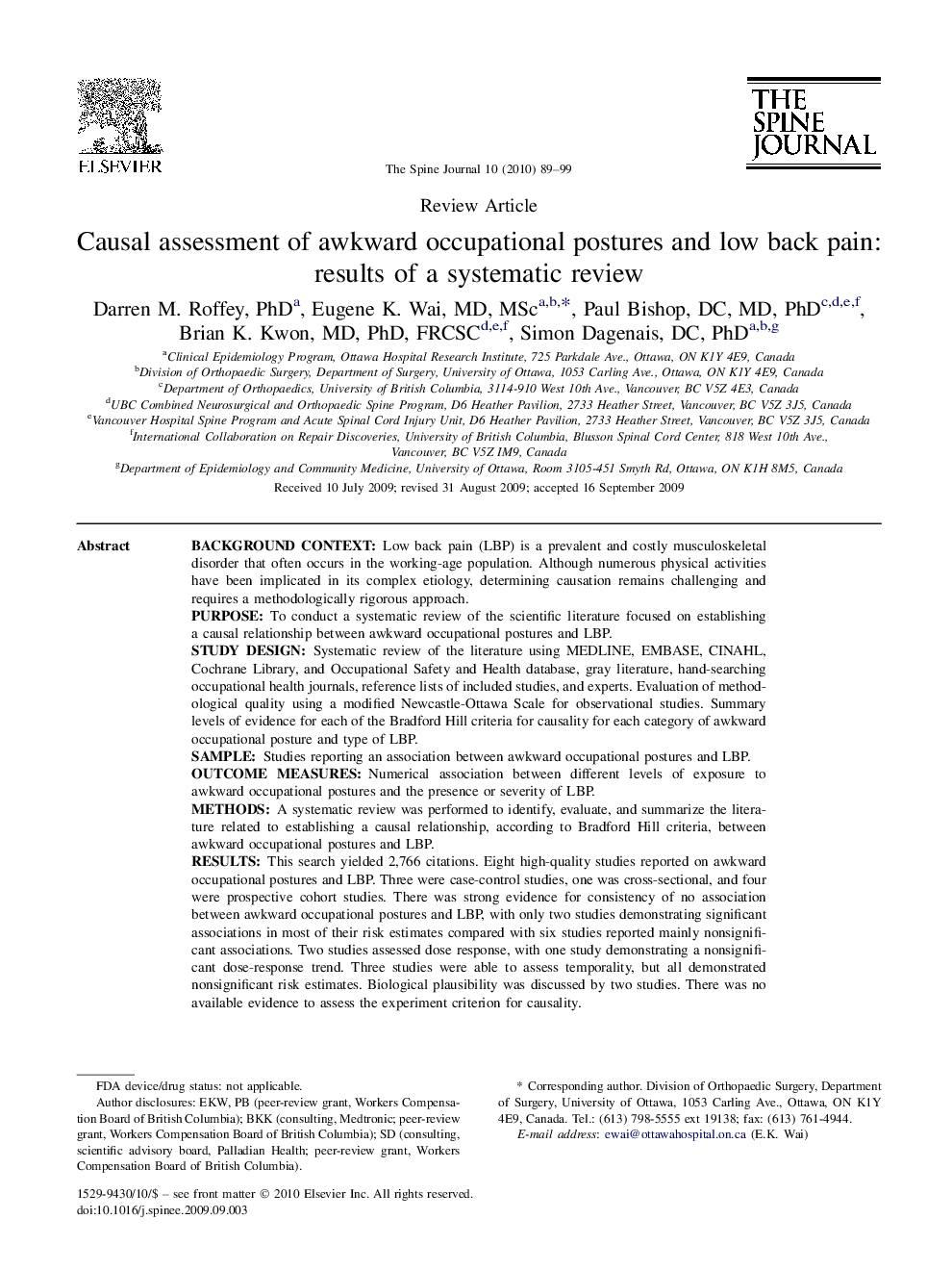| کد مقاله | کد نشریه | سال انتشار | مقاله انگلیسی | نسخه تمام متن |
|---|---|---|---|---|
| 4099016 | 1268629 | 2010 | 11 صفحه PDF | دانلود رایگان |

Background contextLow back pain (LBP) is a prevalent and costly musculoskeletal disorder that often occurs in the working-age population. Although numerous physical activities have been implicated in its complex etiology, determining causation remains challenging and requires a methodologically rigorous approach.PurposeTo conduct a systematic review of the scientific literature focused on establishing a causal relationship between awkward occupational postures and LBP.Study designSystematic review of the literature using MEDLINE, EMBASE, CINAHL, Cochrane Library, and Occupational Safety and Health database, gray literature, hand-searching occupational health journals, reference lists of included studies, and experts. Evaluation of methodological quality using a modified Newcastle-Ottawa Scale for observational studies. Summary levels of evidence for each of the Bradford Hill criteria for causality for each category of awkward occupational posture and type of LBP.SampleStudies reporting an association between awkward occupational postures and LBP.Outcome measuresNumerical association between different levels of exposure to awkward occupational postures and the presence or severity of LBP.MethodsA systematic review was performed to identify, evaluate, and summarize the literature related to establishing a causal relationship, according to Bradford Hill criteria, between awkward occupational postures and LBP.ResultsThis search yielded 2,766 citations. Eight high-quality studies reported on awkward occupational postures and LBP. Three were case-control studies, one was cross-sectional, and four were prospective cohort studies. There was strong evidence for consistency of no association between awkward occupational postures and LBP, with only two studies demonstrating significant associations in most of their risk estimates compared with six studies reported mainly nonsignificant associations. Two studies assessed dose response, with one study demonstrating a nonsignificant dose-response trend. Three studies were able to assess temporality, but all demonstrated nonsignificant risk estimates. Biological plausibility was discussed by two studies. There was no available evidence to assess the experiment criterion for causality.ConclusionsThere was strong evidence from six high-quality studies that there was no association between awkward postures and LBP. Similarly, there was strong evidence from three high-quality studies that there was no temporal relationship. Moreover, subgroup analyses identified only a handful of studies that demonstrated only weak associations and no evidence for other aspects of causality in certain specific subcategories. It is therefore unlikely that awkward occupational postures are independently causative of LBP in the populations of workers studied.
Journal: The Spine Journal - Volume 10, Issue 1, January 2010, Pages 89–99